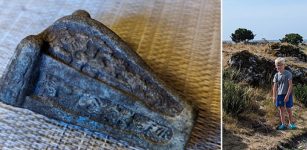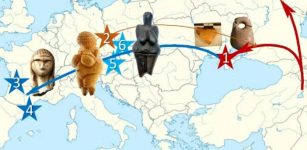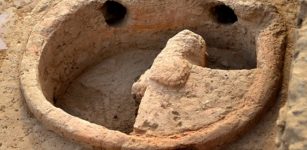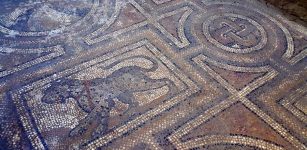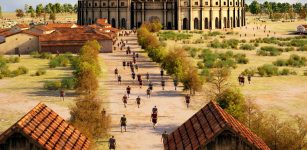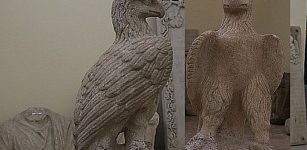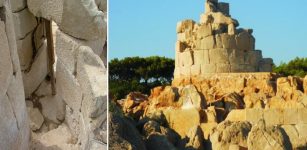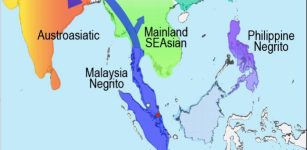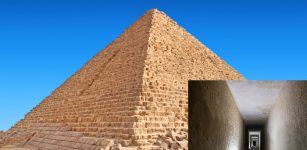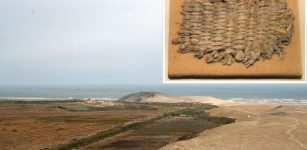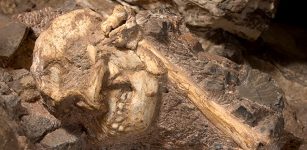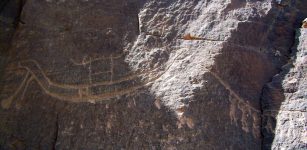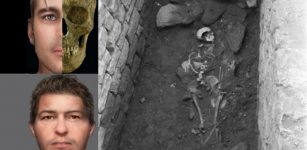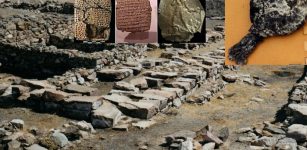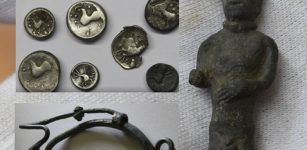Life-Sized Stone Busts Reveal For The First Time Faces Of The Tartessian Culture
Conny Waters - AncientPages.com - Archaeologists excavating at the Casas de Turuñuelo archeological site in Guareña, Badajoz, Spain, have unearthed five remarkable life-sized stone busts that reveal for the first time the faces of the ancient Tarteso people.
The Tartessian culture occupied the southwestern Iberian Peninsula between the 9th and 5th centuries B.C.
2,500-year-old stone sculptures reveal for the first time the faces of the Tartesian culture. Credit: Higher Council for Scientific Research (CSIC)
The team from the Institute of Archaeology, a joint center of the Higher Council for Scientific Research (CSIC) and the Junta de Extremadura, led by Esther Rodríguez González and Sebastián Celestino Pérez, confirmed at a press conference that, of the set recovered to date, two of the figurative reliefs are almost complete and correspond to two female figures adorned with outstanding earrings or earrings that represent typical pieces of Tartessian goldsmithing. The Tartessos people were skilled at silver, tin, and iron metalworking, making them wealthy.
"These types of earrings have been found at other sites of the era and region, so they are very well-documented, but now we finally know how they were worn: the chain was used to attach it to the ear," Esther Rodríguez, the site’s other co-director commented on the earrings.
Until now, these gold pieces were only known through discoveries made in enclaves such as the Cancho Roano site or within the set that makes up the Aliseda treasure, a Tartessian funerary trousseau found in Cáceres. Given the technical quality and the artistic detail with which they were made, it seems we are dealing with the representation of two female divinities from the Tartessian pantheon. However, the researchers do not rule out that they are prominent figures in Tartessian society.
Along with the two female figures, other reliefs have been recovered. These belong to at least three other individuals, one of them identified as a warrior by preserving part of the helmet.
“Whether it was an artisan from elsewhere or someone born in the area who mastered the techniques, it seems clear that they were sculpted here, which also says a lot about the level of sophistication of those who commissioned something like this,” says Sebastián Celestino, a researcher at the Institute of Archaeology of Mérida and co-director of the project.
"This extraordinary finding represents a profound paradigm shift in interpreting Tartesus, traditionally considered an aniconic culture for representing divinity through animal or plant motifs or sacred stones.
Lastly, the finding only further influences the site's importance and the Tartessian culture in the Guadiana Valley during its last moments," the science team informed in a press statement.
Artifacts produced by the Tartesian culture. Credit: José Luiz Bernardes Ribeiro - CC BY-SA 3.0
According to Rodríguez, "the finding could also lead to the rewriting of art history, which mentions the flowering of sculpture in the Mediterranean region in Etruria and Greece, with the only Iberian exceptions being the Lady of Elche and the Lady of Baza, both of which date from around a century later than the Tartessian busts," El Pais reports.
The five stone statues were found scattered in one of the rooms that archaeologists unearthed during the excavation of this unusual building. The purpose of this place remains a riddle, but scientists think it may have been an economic and political center.
Why one day, 2,500 years ago, the inhabitants of the Guareña site made the decision to destroy it is one of the great mysteries facing researchers. Perhaps, another ancient culture threatened the Tarteso people, and the inhabitants decided to relocate, or there was another reason why the site was abandoned.
See also: More Archaeology News
In any case, according to Rodríguez, the extraordinary Tarteso stone busts "are now being compared with the Etruscan, Iberian, and Greek sculptures of the time as nothing similar has ever been found before while researchers try to locate the stone used to make them, which is probably some kind of calcarenite."
Written by Conny Waters - AncientPages.com Staff Writer



